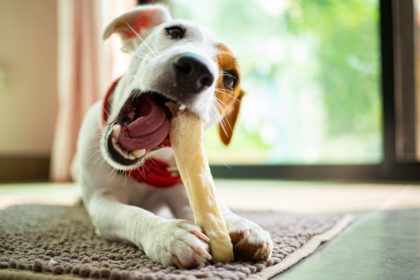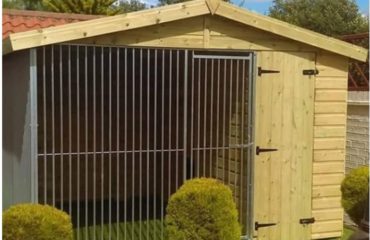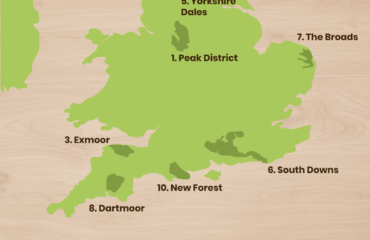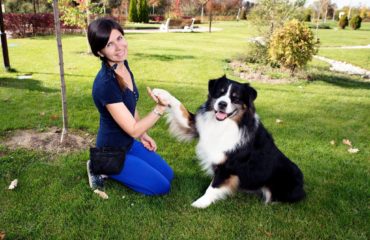How to Stop Your Dog’s Destructive Chewing

Chewing is normal dog behaviour, as it keeps their jaws strong and teeth clean. It’s also one of the ways that dogs explore the world and can even evoke calmness. However, chewing becomes problematic when dogs gnaw valuable or dangerous household items.
The goal isn’t to stop them from chewing completely, as dogs find this activity stimulating and fun. Instead, you should encourage normal chewing behaviour and teach them what isn’t okay to chew. Benchmark Kennels have put together a guide on the best training techniques to avoid or stop your dog’s destructive chewing.

Find the root of the problem
There are many possible destructive chewing triggers, including behavioural problems, emotional responses, and medical conditions. Determining and addressing the underlying cause will help you mitigate the unhealthy chewing habit.
Teething
Puppies often chew to relieve teething discomfort, which they usually experience until they’re around six months old. Providing them with ice or frozen wet washcloths to chew helps numb the pain and prevents them from using unsuitable items instead like your expensive shoes or chair legs. Supervise your dog when chewing the washcloth in case bits of fabric become loose and cause a choking hazard.
Hunger
If your dog’s diet is unsatisfying or unbalanced, their hunger might cause destructive chewing. Consult with your vet to check whether your dog’s diet is suitable for their breed, age, and size.
Anxiety
Dogs sometimes chew as a response to feeling anxious, scared or stressed. Try avoiding situations that might cause this reaction, such as being approached by a child or an unfamiliar human while your dog is in a confined space.
It’s important that dogs have a safe space, such as a crate, that they can go to seek comfort when they feel distressed and want to be alone. If your dog loves being outside, an insulated and sheltered outdoor kennel is an ideal solution.
If you suspect your dog has separation anxiety, causing them to chew when left alone, there are several training techniques you can implement to help dogs adjust to being alone.
Anxious dogs can start biting their paws, which is a hard habit to break and is best dealt with by a professional dog behaviourist.
Boredom
Your pooch may turn to destructive chewing if they aren’t physically or mentally stimulated. To keep boredom at bay, ensure they’re exercised frequently and you dedicated plenty of time each day for playing with them. Even if you have a big garden, take them out for plenty of walks in different locations so they can experience new environments.
You can also challenge your dog’s mind with puzzle toys, teaching them new tricks and alternating the toys that are left out.
Bored dogs may develop chewing problems to get attention, so ensure you’re interacting with them enough too.
Health issues
If your dog bites their tail or paws, they might be trying to relieve itchiness, inflammation, or soreness. Possible causes of these symptoms include parasites, allergies, and skin conditions.
Biting their tail can sometimes be a response to digestive problems such as an impaction caused by constipation. Though it’s less common, it can indicate a neurological disorder or an obsessive behavioural problem too.
Contact your vet to identify any health problems and receive advice on the best treatment options.

How to encourage normal chewing behaviour
Once you’ve found and addressed what’s causing the destructive chewing, there are several ways to direct them to more appropriate habits.
Protect household items
Keep any unsuitable items for chewing out of reach, including scissors, shoes, books, and clothing. Don’t tease them with these items when playing either, to avoid confusion.
Use chew deterrent sprays on objects that you can’t hide, such as furniture, that your dog is likely to chew. However, this option isn’t effective with all dogs, and you must use the spray regularly.
Introduce suitable chewable items
Encourage your dog to use chew toys but avoid toys that can easily break, chip, or splinter, as this can be a choking hazard. In contrast, don’t give your dog toys that are very tough either, which could cause tooth fractures.
Rather than feeding dogs leftover bones from cooking, which can cause injuries, use inedible chew bones designed for this purpose.
There are also edible chewable items, including pig ears and bully sticks, but supervise your dog when eating these just in case they begin to choke. Try not to feed these to your dog when in the presence of other dogs, to stop them eating too fast and heightening the risk of choking.
If you catch your pup chewing something they shouldn’t be, guide them to an alternative, appropriate option and praise them for choosing the correct item.
Don’t leave them unsupervised
Supervise your dog constantly until you’re confident you can leave them alone without destructive chewing occurring. When you can’t monitor your pup’s behaviour, place them in a crate after going through the crate training process.
If your dog chews their crate or kennel, provide them with chew toys, don’t leave them in there for longer than six hours, and ensure they’ve had enough exercise. You can use anti-chew strips to stop your dog from chewing the kennel too.
Tactics to avoid
If your dog is chewing something unsuitable, don’t chase them, as this can become a fun game for your dog, and encourage them to do it more for attention.
Don’t punish your dog for destructive chewing either, as they won’t understand why you’re upset. Instead, they’ll likely feel threatened, which can lead to anxiety and mistrust towards you. If anything, disciplining your pup for this behaviour could teach them not to chew when you’re around and wait until you leave.
Identifying the cause of destructive chewing will help you find the best solution. If you need further advice or your dog responds aggressively to any of these training methods, seek advice from a professional dog trainer or behaviourist.
Need an outdoor kennel to help your dog feel calm?
If you want to provide your dog with a safe place to retreat to when they’re feeling anxious, an outdoor kennel is a perfect solution. Benchmark Kennels offer a range of secure and spacious kennels that are made-to-order to suit your dog’s shape and size.
You can order a wooden or WPC eco-thermal dog kennel directly from our website today or contact us via phone to find out more about our excellent range of kennels.
13 Comments to “ How to Stop Your Dog’s Destructive Chewing”
You must be logged in to post a comment.





… [Trackback]
[…] Info on that Topic: benchmarkkennels.co.uk/how-to-stop-your-dogs-destructive-chewing […]
… [Trackback]
[…] Find More on that Topic: benchmarkkennels.co.uk/how-to-stop-your-dogs-destructive-chewing […]
… [Trackback]
[…] Find More Information here on that Topic: benchmarkkennels.co.uk/how-to-stop-your-dogs-destructive-chewing […]
… [Trackback]
[…] Read More Info here on that Topic: benchmarkkennels.co.uk/how-to-stop-your-dogs-destructive-chewing […]
… [Trackback]
[…] Information to that Topic: benchmarkkennels.co.uk/how-to-stop-your-dogs-destructive-chewing […]
… [Trackback]
[…] Find More here to that Topic: benchmarkkennels.co.uk/how-to-stop-your-dogs-destructive-chewing […]
… [Trackback]
[…] Information to that Topic: benchmarkkennels.co.uk/how-to-stop-your-dogs-destructive-chewing […]
… [Trackback]
[…] Find More Info here on that Topic: benchmarkkennels.co.uk/how-to-stop-your-dogs-destructive-chewing […]
… [Trackback]
[…] Find More Info here on that Topic: benchmarkkennels.co.uk/how-to-stop-your-dogs-destructive-chewing […]
… [Trackback]
[…] There you can find 71008 more Info to that Topic: benchmarkkennels.co.uk/how-to-stop-your-dogs-destructive-chewing […]
… [Trackback]
[…] Read More on on that Topic: benchmarkkennels.co.uk/how-to-stop-your-dogs-destructive-chewing […]
… [Trackback]
[…] Information to that Topic: benchmarkkennels.co.uk/how-to-stop-your-dogs-destructive-chewing […]
… [Trackback]
[…] Info on that Topic: benchmarkkennels.co.uk/how-to-stop-your-dogs-destructive-chewing […]